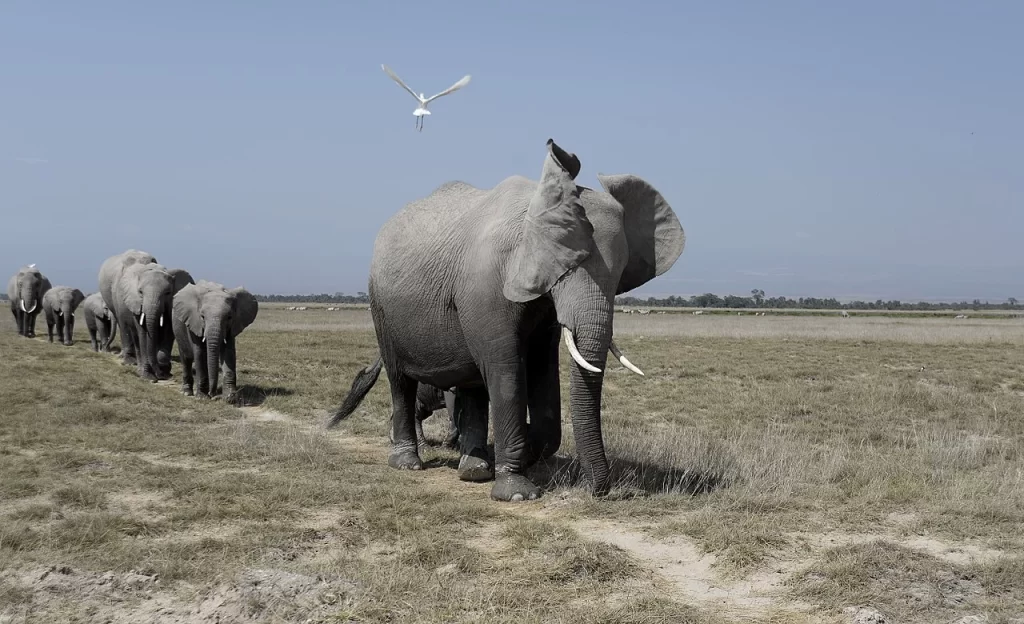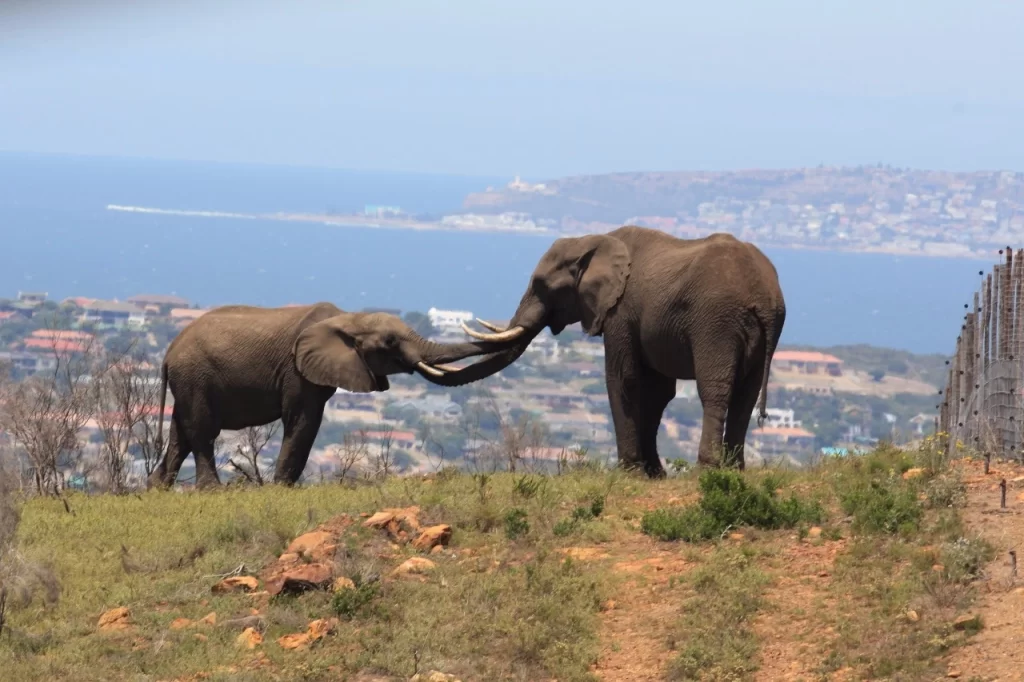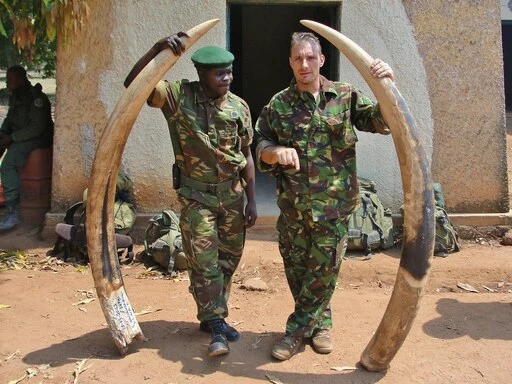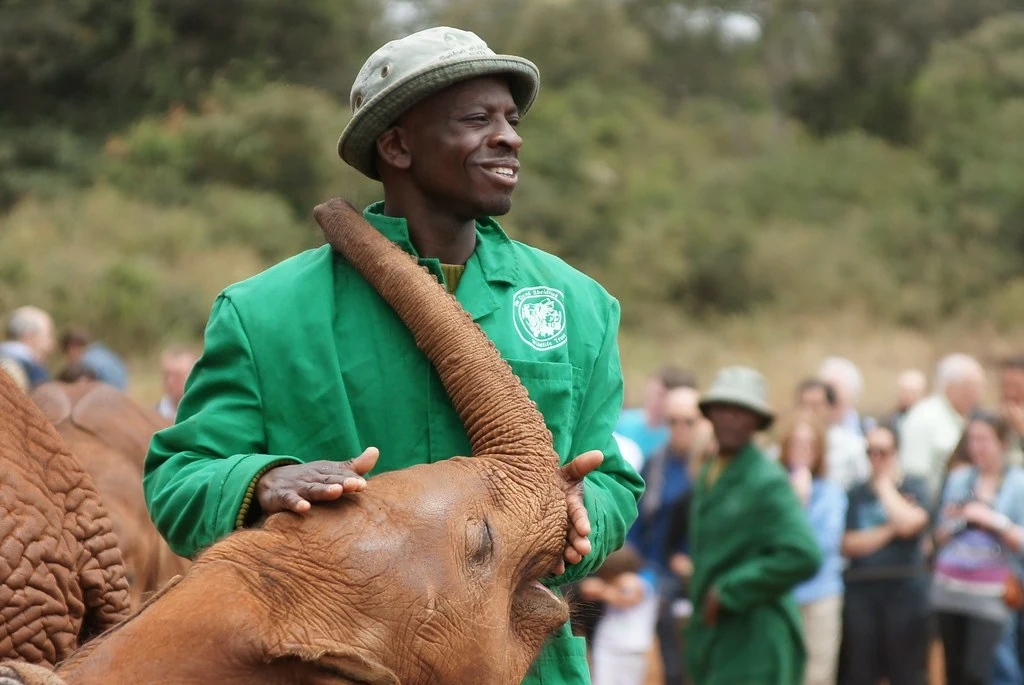If you are visiting the national parks or game reserves in Africa, you will hardly fail to see an elephant moving about. Isn’t it a wonderful view to see an elephant walking just there ahead of you?
The number of African elephants today is estimated to be 415,000. These are distributed across the national parks all over Africa.
 Amboseli National Park.” class=”wp-image-3178″ />
Amboseli National Park.” class=”wp-image-3178″ />The species of African elephants have two subspecies which are the savannah/ bush elephants and the forest elephants. The population of forest elephants is lower than that of the savanna elephants.
Are African Elephants Endangered?

Yes, African elephants are endangered today.
The African elephants face great danger as they are in their habitat. The greatest danger faced by African elephants is poaching. Poaching has made the population of African elephants decline rapidly over the years due to the killing of these elephants.
There are times when the elephants invade people’s farms which leads to human-wildlife conflict. People will use any means possible to save their farm produce which will result in using weapons. In this process, the elephants will be seriously injured and may even die afterwards. Elephants are also susceptible to some diseases which affect them.
Why Are African Elephants Endangered?

The elephants are poached mainly to acquire their ivory tusks. The ivory tusks are considered to be very valuable in today’s market which continues to go up every day. The ivory tusks are used in making ornaments and jewelry. The market for these items is very high in China. The demand for ivory tusks is high in Asian countries. This cripples the efforts put in place for the conservation of elephants and poaching and illegal ivory trafficking continue.
The human population continues to increase with each passing day. Due to this, people are expanding their farming areas to get enough food. In the process of converting forests and grasslands into farmlands, elephants’ habitat is destroyed. However, elephants still require more land where they can live peacefully. Therefore the elephants trespass and go to farms where they destroy the crops. This results in human-wildlife conflict. In the process of driving away the elephants, they are injured. These injuries may be very serious to the point of killing the elephants.
Elephants are easily affected by some diseases such as tuberculosis and anthrax. Tuberculosis affects the lungs of elephants and deprives them of air making them die. Elephants are also prone to anthrax which is mainly in the soil as they feed. All these diseases pose a threat to African elephants.
Which African Elephant Species Are Extinct?
There are no subspecies of African elephant which is considered to be completely extinct.
Both the forest elephant and savanna elephant, which are subspecies of African elephants, are not extinct. However, the African elephant is at a high risk of becoming extinct due to problems such as poaching, human-wildlife conflict and diseases. Of the two subspecies of the African elephants, the forest elephant is at a higher risk of being extinct than the savanna elephant.
What Conservation Efforts Are In Place For African Elephants?
Various measures are being enacted to protect African elephants. The African elephant should continue to attract more tourists to the African nations. The following are some of the steps which have been taken.
Campaign Against Ivory Trading

Organizations and governments are merging efforts to crush ivory markets which continue to be a threat to the elephants. With the United States banning ivory trading in the country it encouraged other nations such as Hong Kong and the United Nations to do the same. Due to the continued pressure piled on it, China finally gave in and closed its ivory market. This was lauded as a major step toward the conservation of elephants. There are also engagements with those who rely on ivory for their income to convince them otherwise.
Protection Of Areas Occupied By Elephants.
The presence of an appropriate habitat is essential in ensuring the elephants move about freely and also preventing human-wildlife conflict. Installing electric fences or even beehive fences ensures elephants are enclosed in a certain area and no strangers find their way in. The wildlife management also patrols the areas where elephants stay. These patrols are done regularly and ensure that the elephants are safe. Other wildlife services result in the use of drones and hidden cameras in ensuring that the elephants are safe. All these efforts are aimed at safeguarding the elephants.
Protecting Elephants Against Poaching
As poaching continues to be a threat to the safety of elephants, measures have been enacted to protect African elephants. The game rangers across the national parks in Africa are trained especially to counteract the poachers. The rangers are equipped with weapons in case any danger arises. Since some of the parks are very vast there are patrol cars which move about and ensure there are no poachers. Countries have made strict laws to help in curbing poaching. Those who are found guilty of poaching are given tough punishments which serve as a lesson to the others.
Creating Awareness To The Public To Conserve The Elephants

For the protection of elephants to be successful, it has to be a collective effort. Due to this government organizations as well as non-governmental organizations have been at the forefront in educating the people on the conservation of elephants. This has mostly targeted the surrounding communities around the parks. This awareness has created a partnership between the wildlife services and the people which strengthens anti-poaching efforts. The public helps in notifying the wildlife services management of any poaching activities which may be ongoing.
Keeping Track Of The Elephants In Their Habitats
Technology is continuing to improve and there is a need to use it to protect elephants. Nowadays elephants have tracking devices inside their bodies which help in monitoring their movement. With this, the wildlife management will know whenever an elephant is in danger. Also with the movements of the elephants they will sense if the elephant is in danger. Other elephants have belts on them which have tracking devices.
